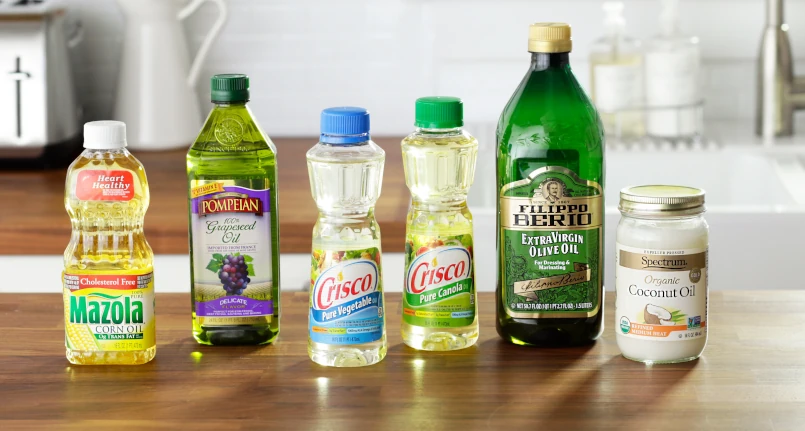Introduction
When frying, the doubt always refers to the quantity of oil to use (as well as the type of oil itself). To prepare a healthy fried food it is necessary to observe some basic rules, because if prepared with criteria it can be consumed even if you follow a balanced and healthy diet , in moderation and infrequently, but this should not be excluded a priori.
Rules for healthy frying
- Frequency: fried food should be eaten at most twice a month and in small portions
- Use fresh oil
- Do not reuse the same oil several times
- Avoiding pre-fried foods (double frying )
- Fry between 160 and 180 degrees
- Do not exceed with the breading which would end up absorbing a large amount of oil
- Immerse all the food in the oil
- Allow the oil to be absorbed by placing the fruit and vegetables on a sheet of absorbent paper
- Add a little salt only after frying
- Avoid sauces high in fat and sugar
Frying oil: quantity
The quantity of oil for frying , in general, requires a standard proportion of use which corresponds to one liter of oil for each kg of food, fried separately in rounds of 100-200 grams depending on the size of the pan. So the conversion is also valid as: 100 ml every 100 gr. However, depending on the size of what is to be fried , the quantities could increase because the food must be well immersed. This not only for uniform cooking and browning, but for reducing cooking times to a minimum , and obtaining crispy and dry fried food.
The size of the pan is also important: the food being fried must be completely immersed in the oil, so it is essential to opt for a pan that, due to its shape and size, allows you to use the right amount of oil without exceeding it, and therefore wasting it. For example, if you have to fry apple fritters, you will need a larger and taller pan, if you are going to prepare breaded slices, the pan will have to be wider and lower to better regulate the oil level. In conclusion, the general rule of weights is the one highlighted in the previous paragraph, but also the size of the foods and the right pan can influence the amount of oil needed for healthy fried food.
| Type of Oil | Quality | Smoke point | |
| Avocado oil | Refined | 270°C | 520°F |
| Safflower oil | Refined | 266°C | 510°F |
| Sunflower oil | Neutralized, dewaxed, clarified and deodorized | 252-254°C | 486-489°F |
| Butter | Clarified | 250°C | 482°F |
| Mustard oil | 250°C | 480°F | |
| Palm oil | Diffracted | 235°C | 455°F |
| Soybean oil | 234°C | 453°F | |
| Coconut oil | Refined, dehydrated | 232°C | 450°F |
| Peanut oil | Refined | 232°C | 450°F |
| Rice bran oil | Refined | 232°C | 450°F |
| Sesame oil | Semi-refined | 232°C | 450°F |
| Sunflower oil | Semi-refined | 232°C | 450°F |
| Sunflower oil, rich in oleic acid | Refined | 232°C | 450°F |
| Corn oil | 230-238°C | 446-460°F | |
| Sunflower oil | 227°C | 441°F | |
| Peanut oil | 227-229°C | 441-445°F | |
| Almond oil | 221°C | 430°F | |
| Various seed oil | Refined | 220°C | 428°F |
| Canola oil | 220-230°C | 428-446°F | |
| Cotton Oil | Refined, clarified, deodorized | 220-230°C | 428-446°F |
| Grape seed oil | 216°C | 421°F | |
| Olive oil | Virgin | 210°C | 410°F |
| Olive oil | Extra virgin, low acidity, high quality | 207°C | 405°F |
| Canola oil | Refined | 204°C | 400°F |
| Beaver oil | Refined | 204°C | 392°F |
| Olive oil | Refined | 199-243°C | 390-470°F |
| Lard | 190°C | 374°F | |
| Olive oil | Extra virgin | 190°C | 374°F |
| Canola oil | Squeezed | 190-232°C | 375-450°F |
| Corn oil | Not refined | 178°C | 352°F |
| Coconut oil | Unrefined, cold pressed , virgin | 177°C | 350°F |
| Sesame oil | Not refined | 177°C | 350°F |
| Olive oil | Extra virgin | 160°C | 320°F |
| Peanut oil | Not refined | 160°C | 320°F |
| Sunflower oil | Semi-refined | 160°C | 320°F |
| Sunflower oil, high oleic acid | Not refined | 160°C | 320°F |
| Butter | 150°C | 320°F | |
| Canola oil | Not refined | 107°C | 225°F |
| Linseed oil | Not refined | 107°C | 225°F |
| Sunflower oil | Not refined | 107°C | 225°F |
| Sunflower oil | Unrefined, first cold pressed, raw | 107°C | |
Frying oil temperature
For carefully prepared and healthy fried food, the temperature of the oil is also important. In this regard, it is better to have a kitchen thermometer. When the oil is at 160/180° you can start frying.
If the temperature is too low: the fried food will be greasy and mushy.
If the temperature is too high: the fried food will be burnt and black on the outside and the contents almost raw.
When to change oil
One of the fundamental rules for preparing healthy fried food is NOT to recycle frying oil. The reason lies in the toxic substances that can be released if the oil were to reach the smoke point again . During frying, the oil changes and unhealthy substances can accumulate inside it. Again for the same reason, it is advisable to change the oil that has already been used for several frying sessions and remove any residues of already fried food. The temperature between 160-180° also allows the food not to absorb large quantities of oil.




